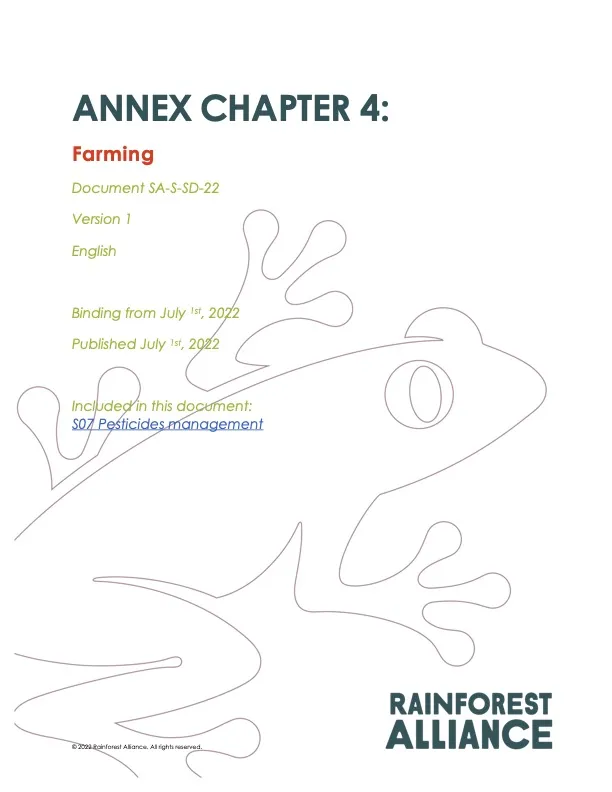Annex Chapter 4: Farming (previous Annex S07)
SA-S-SD-22
This annex includes additional binding content related to the implementation of the Requirements in Chapter 4 of the Sustainable Agriculture Standard: Farming.
This document includes:
- Pesticides Management (Previous Annex S07)
(Related to requirements 4.5.7, 4.6.1, 4.6.2, 4.6.7 and 5.6.1)
When the Standards v1.3 was published on February 6th, 2023, the content of this document remained unchanged.

Choose a language and version to view this Annex:
to Sep 30, 2025